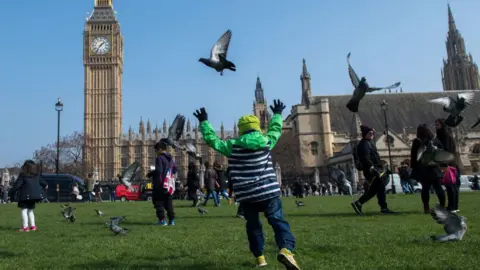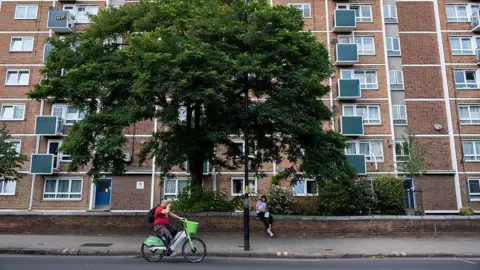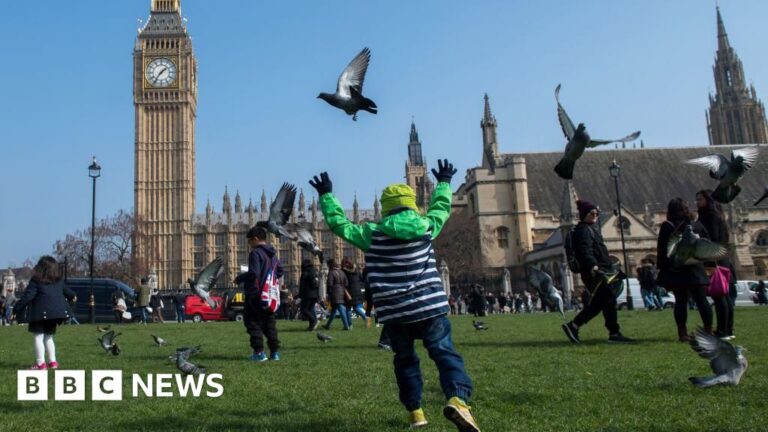Kumail JafferLocal Democracy Reporting Service
 AFP via Getty Images
AFP via Getty ImagesFamilies are being priced out of living in London due to rising costs and a lack of social housing, the London Assembly has been told.
The number of births in London in 2023 was 20% lower than the peak in 2012, with the sharpest decline in inner London, according to the Assembly’s Economy, Culture and Skills Committee.
The committee heard from experts on this trend, with child poverty campaigner Katherine Hill urging London’s mayor to make the capital a “child-friendly city”.
A spokesperson for the mayor said London’s population had “always fluctuated”, and the mayor had been doing “all he can” to support families with the cost of living.
The mayor’s office blamed falling numbers of primary school pupils in inner London on factors including “national falling birth rates, Brexit, housing costs and the impact of the cost-of-living crisis”.
 In Pictures via Getty Images
In Pictures via Getty ImagesMs Hill, who is the strategic programme manager for child poverty campaign group 4in10, told the committee on Tuesday: “London rightly prides itself on being a diverse city – that should cut across all parameters, including age.
“In terms of getting people to have children and then stay in London with them, affordable housing and affordable childcare are the absolute key.”
She said families were being “priced out of areas where previously they have been able to live”, primarily due to availability of social housing.
Dr Bernice Kuang, a research fellow in demography at the University of Southampton, claimed Londoners still wanted to have an average of two children, but that this was not feasible for many in the capital.
She blamed a shift from social housing to private renting in inner London, adding that “private rented accommodation is not seen as the place to start a family”.
The mayor’s office claimed Sir Sadiq Khan had “started more new council homes for Londoners than any time since the 1970s and has funded free school meals to all state primary school children”.
 Getty Images
Getty ImagesExperts said another reason for the drop in the number of families in London was the cost of childcare.
According to Coram Family and Childcare, parents of three to four year olds in inner London pay an average of £184.96 for 50 hours of childcare, even with the government’s free 30-hour offer, compared with a London average of £126.94.
Ms Dye said availability was often an even bigger problem than affordability, with “childcare deserts in parts of the city”.
The panel also expressed concerns about a lack of public green spaces for children to play in the capital.
‘Fantastic city for children’
The declining number of children born in the capital has forced many primary schools to close.
In February, a London Councils report predicted reception pupil numbers in the city would decrease by 3.6% over the next four years, which translates to 3,195 pupils or 117 classes.
Ms Hill said this would change “how our city feels” and that schools were “the heart of our communities”.
“If we lose them, we’re losing more than figures on a graph,” she said.
However, she acknowledged that “London is a fantastic city for children”, noting free transport and museums for children to take advantage of.
But, she added: “They need a roof over their head to be able to do that.”



